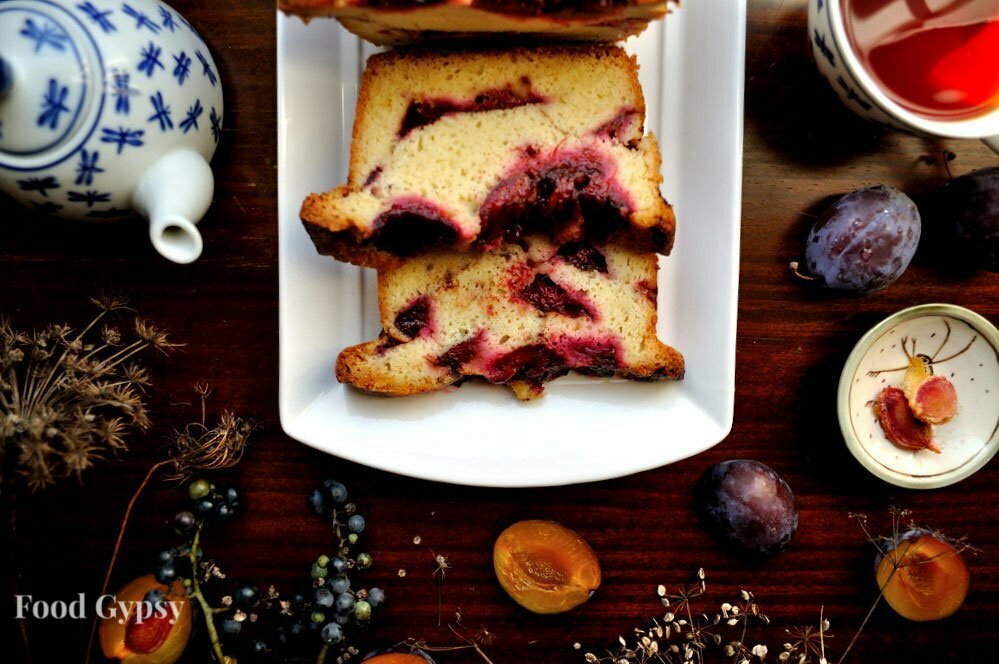Cold weather food for those long nights of winter, Classic Beef Stew & Dumplings is…

The Humblest of Breads
Humble Bread is the passion project of Henry Willis and Natalie Normand. Their farm based bakery, on the crest of a hill in the heart of Ontario’s Prince Edward County, resides in a hip-roofed red barn over 140 years old. “The barn was in great shape, clearly well taken care of,” said Willis as he walked us through his humble bakery.
The work site was tidy despite the ongoing construction. The outside of the barn was partially covered in construction wrap, windows still yet to be trimmed and walls soon be painted. Renovations should be wrapped up in a few weeks. Regardless of the state of the structure, the oven is finished, the bakery has four walls, and a sound system that cost the farm a tractor, and Willis is pumping out beautiful loves of bread twice a week. “We’ll get the tractor later” he smiled.
Hand rolled, gorgeous loaves of bread await local Humble Bread customers in cooling racks near the door on Tuesdays and Thursdays. Baking Country White, Sourdough, Calamata Olive, Sunflower Spelt, Rye, and Cider Raisin Grain; loaves retail from $5.50 – $7.00 depending on your bread.
We stumbled upon Humble Bread as part of an amazing sandwich in Bloomfield’s Agrarian Cafe on a recent visit to Prince Edward County. The name and the flavour struck a cord, leading us down a country road as we tracked down it’s baker.
Willis and his partner in life and bread making, Natalie Normand, left Scarborough Ontatio after Willis was laid off from his construction job. That’s when a backyard hobby, feeding neighbors from a small brick oven, became a full fledged business as they moved to live a dream. “It was part of our exit strategy, and when the opportunity came we took it.” The farm, just outside Bloomfield, fit their lengthy list of criteria that included being near Willis’s two teenaged children from a previous marriage, now living in Toronto. “This is where we plan to grow old” he smiled.
A chef for eighteen years, Willis had already seen a shift in career when he went back to school to study engineering. This move embraced his true love, the perfection of a naturally leavened bread, that is now a small bakery.
It seems somehow appropriate be be using these age old techniques of bread making in a barn. In it’s truest form, baking is a humble practice. Naturally leavened bread is nothing more than flour, water and salt. It’s base is a sourdough culture, made with flour and water and left to ferment and develop live culture. This is a bread that will not be rushed, it will not be pushed. It is, from crust to crumb, a humble loaf. Part science and part art, the ancient practice of bread making is a resurging practice among a new breed artisan bread makers in North America.
Bakers speak their own language the use words like crumb, hydration, fermentation, proofing, oven spring and crust. Discussions on flour can go on for days. Points about protein value, ash content, gluten development, the grind, the mill, the miller, the field it grew in… the true bread maker is a passionate artist.
Crumb: When a baker talks about the crumb they are talking about the pattern of holes inside of a loaf.
Proof: In bread baking terms, proofing means to allow the bread dough to rise.
Fermentation: (1) The process by which yeast culture metabolizes sugars to produce carbon dioxide and alcohol (2) (aka bulk fermentation, first fermentation) The period of time the dough rests after mixing and before dividing/shaping.
Oven spring: A phrase to describe the way the bread raises as it hits the heat of a ready oven.
Ash: A term used in relation to flour to indicate its mineral content.

Humble’s wood fired oven is anything but humble, it is a brick masterpiece measuring 6 feet wide by 10.5 feet deep. Handcrafted from salvaged local brick with a vaulted arch, it bears an inlaid wheat sheath, the symbolic icon behind the Humble Bread logo. Filled twice a week, Willis lights the wood fire that brings the internal temperature over 900°F, later falling to the perfect baking temperature of 650°F. Extraordinarily well insulated, the oven also maintains it’s radiant heat for days. On our visit, two and a half days after baking, the oven was still at 393°F.
“You should see the oven spring we get on the bread at these temperatures,” Willis marveled “it’s amazing!” Radiant wood heat is a wet heat, that combined with a raw, organic leavened process makes for a bread with more flavour and more moisture. While most bakers clear their shelves in the same day, Humble’s bread is actually better a day or two later. “The rye bread is so wet I let it rest for 24 to 48 hours before cutting” suggests Willis.
Bread made the old-fashioned way, without the aid of fast-rising yeasts are also developing a following with those with digestive issues. Willis has fans who swear by his bread as a cure to what some call “wheat belly”. He stands by his product and it’s properties and many health experts are now coming around this way of thinking. “When you can use a commercial yeast and proof and raise bread in 90 minutes, as upposed to the 24 to 36 hours it takes for my bread to rise. You have to think that might have some kind of effect on the body” says Willis.
As a testament to his skill, the top photo of Humble Bread was taken almost two weeks after baking. We brought our bread home and put the extra loafs in the refrigerator to keep. The following weekend, we pulled some out, refreshed it with a light pat of moisture with wet hands and popped it in a 350° oven for about 15 minutes. (Old Grandmother bread saving technique…) True to from it sprang back perfectly, the crust was crisp, the body was moist. It then lived, refrigerated, for another eight days without a hint of mold.
Baking 100 pound of dough at a time, Willis’s oven burns about 20 cords of local hardwood a year. A recent switch from white oak to local ironwood now delvers a hotter, longer burning fire with less ash. This means less wood chucking for Willis on baking and wood delivery days. As we chatted a pile of wood near the door covered by a tarp, was soon to be moved. No one said it wasn’t hard work. As we drove way I had the feeling that built in sound system (the price of a tractor) would soon be cranked, Willis in his gloves and work coat, would be tossing wood and living the dream.
Be it ever so humble, there’s nothing like a beautiful bread.
If you’re in the neighborhood and want to sample a little Humble Bread, The Agrarian Cafe is a good place to start. Not only do they use it in their grilled cheese sandwiches, they also stock full sized loaves for sale. If you’re in the area, look for them at the Wellington Farmers Market May – October. Otherwise you can order from the bakery direct via their website email: info@humblebread.com, with 36 hours notice. They will get back to you with pick-up days and directions. Check their website for new market locations coming this summer, this is a bread to watch for.
A note from Gypsy & Chef B: We thank Henry for his time with us – sharing his story and knowledge on such short notice – and look forward to meeting Natalie on our next visit. Until then… bake well! Below photo compliments of Henry Willis ~ Tools of the Trade.







Food Blog – The Humblest of Breads: Humble Bread is the passion project of Henry Willis and Natalie Normand. … http://t.co/RRrlEXYli0
The Humblest of Breads http://t.co/NEUfD5tUQu
Kevin Bazkur liked this on Facebook.
RT @JustFoodTweets: Food Blog – The Humblest of Breads: Humble Bread is the passion project of Henry Willis and Natalie Normand. … ht …